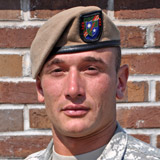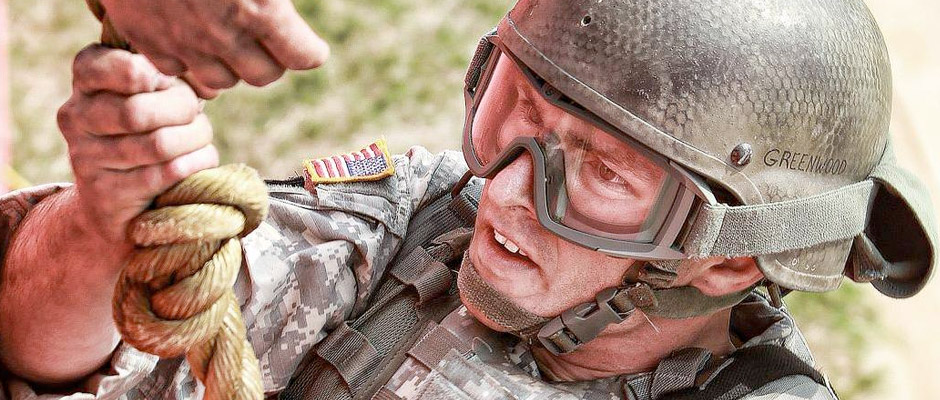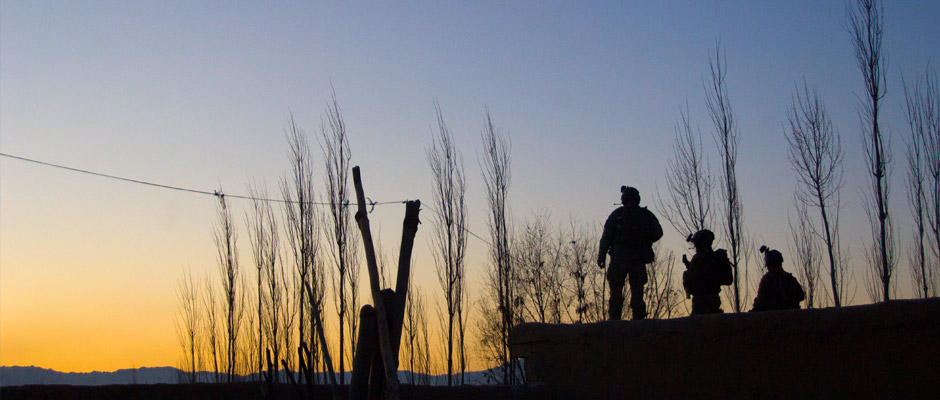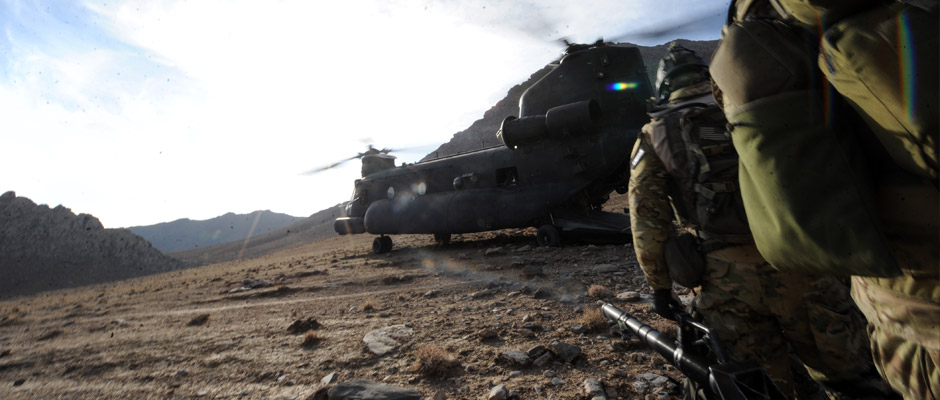The 75th Ranger Regiment
 The 75th Ranger Regiment is a lethal, agile and flexible force, capable of conducting many complex, joint special operations missions. Today's Ranger Regiment is the Army's premier direct-action raid force. Each of the four geographically dispersed Ranger battalions is always combat ready, mentally and physically tough, and prepared to fight our country's adversaries. Their capabilities include conducting airborne and air assault opertions, seizing key terrain such as airfields, destroying strategic facilities, and capturing or killing enemies of the nation. Rangers are capable of conducting squad through regimental size operations and are resourced to maintain exceptional proficiency, experience and readiness. The Regiment remains an all-volunteer force with an intensive screening and selection process followed by combat-focused training. The 75th Ranger Regiment is a proud unit and a team of teams – serving the nation.
The 75th Ranger Regiment is a lethal, agile and flexible force, capable of conducting many complex, joint special operations missions. Today's Ranger Regiment is the Army's premier direct-action raid force. Each of the four geographically dispersed Ranger battalions is always combat ready, mentally and physically tough, and prepared to fight our country's adversaries. Their capabilities include conducting airborne and air assault opertions, seizing key terrain such as airfields, destroying strategic facilities, and capturing or killing enemies of the nation. Rangers are capable of conducting squad through regimental size operations and are resourced to maintain exceptional proficiency, experience and readiness. The Regiment remains an all-volunteer force with an intensive screening and selection process followed by combat-focused training. The 75th Ranger Regiment is a proud unit and a team of teams – serving the nation.
Their locations are:
- lst Battalion, 75th Ranger Regiment, Hunter Army Airfield, Ga.
- 2nd Battalion, 75th Ranger Regiment, Fort Lewis, Wash.
- 3rd Battalion, 75th Ranger Regiment, Fort Benning, Ga.
- Regimental Special Troops Battalion, Fort Benning, Ga.
Learn more at the 75th Ranger Regiment's site.

The Tan Beret
The distinctive headgear of the 75th Ranger Regiment is the tan beret. The beret is a mark of distinction that brands the wearer as a proven warrior. The tan color is reminiscent of the leather caps worn by the original rangers of American heritage and lore.
Rangers Lead The Way!
All Rangers volunteer to become members of the 75th Ranger Regiment and complete the rigorous Ranger Assessment and Selection Program, known as RASP, to join the ranks of this elite U.S. Army Special Operations Command unit.
Lower enlisted Soldiers and Sergeants attend RASP 1, an eight-week course that trains Soldiers in the basic skills and tactics required to operate in the 75th Ranger Regiment. Upon completion of this course, Rangers have the essential skills, training, and confidence to be members of the 75th Ranger Regiment.Officers, Warrant Officers and senior noncommissioned officers (Staff Sgt. through Command Sgt. Maj.) must attend RASP 2, a three-week course focused on selecting the best leadership from across the Army. All sergeants and above in the 75th Ranger Regiment must be Ranger qualified, meaning that they have successfully completed the U.S. Army Ranger School at Fort Benning, Ga., the Army's premier leadership school. Newly assigned Rangers of the 75th Ranger Regiment typically attend Ranger School after multiple combat deployments and training cycles – before they become Sergeants.
Ranger School
 Ranger School is one of the toughest training courses for which a Soldier can volunteer. Army Rangers are experts in leading Soldiers on difficult missions- and to do this they need rigorous training. For over two months, Ranger students train to exhaustion, pushing the limits of their minds and bodies.
Ranger School is one of the toughest training courses for which a Soldier can volunteer. Army Rangers are experts in leading Soldiers on difficult missions- and to do this they need rigorous training. For over two months, Ranger students train to exhaustion, pushing the limits of their minds and bodies.
The purpose of the U.S. Army's Ranger Course is to prepare these Army volunteers — both officers and enlisted Soldiers — in combat arms related functional skills. The Rangers' primary mission is to engage in close combat and direct-fire battles.
There are three distinct phases of Ranger School that require Soldiers to make quick decisions in adverse situations these phases are called 'crawl,' 'walk' and 'run.'
Schedule of Phases
Crawl Phase
The Crawl Phase lasts 20 days. It's designed to assess and develop the necessary physical and mental skills to complete combat missions and the remainder of Ranger School successfully. If a student is not in top physical condition when he reports to the Ranger School, he will have extreme difficulty keeping up with the fast pace of Ranger training, especially the initial phase.
Walk Phase
The Walk Phase takes place in the mountains and lasts 21 days. During this phase, students receive instruction on military mountaineering tasks as well as techniques for employing squads and platoons for continuous combat patrol operations in a mountainous environment. They further develop their ability to command and control a platoon-sized patrol through planning, preparing and executing a variety of combat patrol missions.
Run Phase
The Run Phase of Ranger School continues to develop the Ranger students' combat arms functional skills. They must be capable of operating effectively under conditions of extreme mental and physical stress. This is accomplished through exercises in extended platoon-level patrol operations in a swamp environment. Run Phase training further develops the students' ability to lead small units on airborne, air assault, small boat, ship-to-shore, and dismounted combat patrol operations in a low intensity combat environment against a well-trained, sophisticated enemy.
Training at this school is not MOS dependent. It is a prerequisite for Soldiers to have completed Airborne School.
Learn more at the Ranger Training Brigade site.
Ranger Creed
Recognizing that I volunteered as a Ranger, fully knowing the hazards of my chosen profession, I will always endeavor to uphold the prestige, honor, and high esprit-de-corps of my Ranger Regiment.
Acknowledging the fact that a Ranger is a more elite Soldier who arrives at the cutting edge of battle by land, sea, or air, I accept the fact that as a Ranger my country expects me to move further, faster and fight harder than any other Soldier.
Never shall I fail my comrades. I will always keep myself mentally alert, physically strong, and morally straight and I will shoulder more than my share of the task, whatever it may be, one hundred percent and then some.
Gallantly will I show the world that I am a specially selected and well-trained Soldier. My courtesy to superior officers, neatness of dress, and care of equipment shall set the example for others to follow.
Energetically will I meet the enemies of my country. I shall defeat them on the field of battle for I am better trained and will fight with all my might. Surrender is not a Ranger word. I will never leave a fallen comrade to fall into the hands of the enemy and under no circumstances will I ever embarrass my country.
Readily will I display the intestinal fortitude required to fight on to the Ranger objective and complete the mission, though I be the lone survivor.



